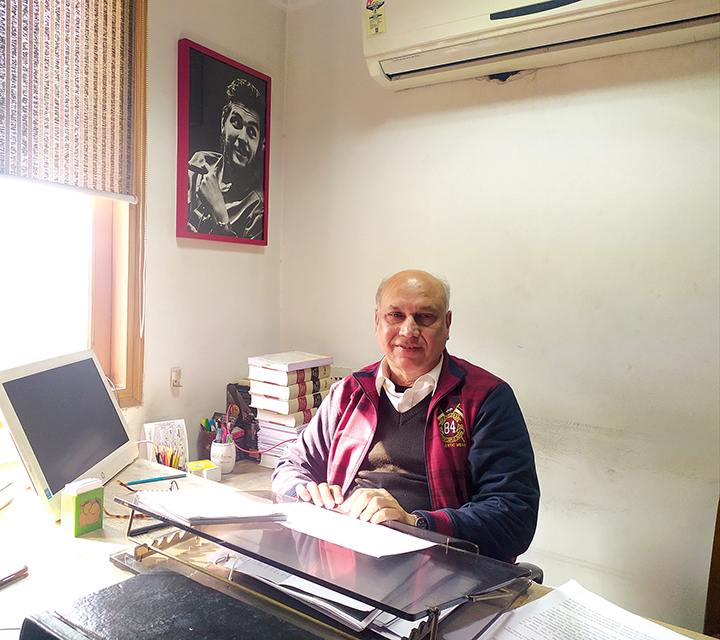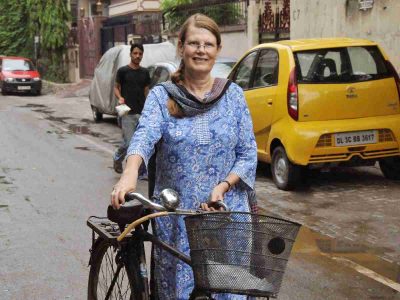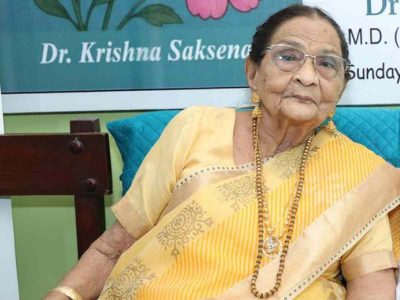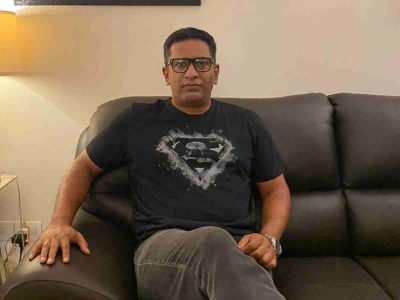Ashok Agarwal, former AAP member, who has been leading the fight for children’s right to education, claims – astonishingly enough – that enrollment is going down in MCD-run schools and schools are being closed down in large numbers
A LAWYER at the Supreme Court and Delhi High Court, Ashok Agarwal has found time apart from his professional practice to work for children’s rights for the last 12 years, He is known for his vigorous effort to make good schooling and healthcare accessible to the under privileged, particularly those from deprived sections of society.
Coming from a trade union background, Ashok closely observed the inhuman working conditions of workers which motivated him to fight for their fundamental rights through the power of Public Interest Litigations (PILs).Later his focus shifted to children of school-going age.
Why did you leave the Aam Aadmi Party’?
I joined AAP in 2013 and on 14 March 2014, I left because I found that they are nothing more than an NGO whose main aim is to build themselves. So I found that I cannot work with them. In my resignation letter, I wrote that the party did not consider positive inputs of workers and the atmosphere was not conducive for growth. Many party members allege that I left the party because I didn’t get a ticket to contest the Lok Sabha elections and that I was disappointed. But the truth is I left because they don’t mean what they say.
What are your views on the school education system in India?
We can divide the education system into three sections: private schools, economically weaker sections (EWS) who under RTE go to private schools and the government system. My estimate is that nearly 20 crore children are of schoolgoing age, out of which 13 crore attend school, including mushrooming unrecognised schools and play schools. No less than 7-8 crore children are still left out of this system, out of them two crore are disabled and completely ignored Of these, less than 1% are in but 50% of them are not taken care of, which is a very serious issue. This then, is the worst category among the children. Besides all these, if we look around there are almost three crore migrant labourers who travel with families, almost all of them are illiterate as they don’t get the opportunity to go to school. Among them, almost one crore of the children travelling with them are left out of school.
Child labour, though outlawed, is still prevalent: children work in fields and as helpers in middle class families. These number around 5-6 crore in the country. Also the number of kids dropping out from school, especially girls who take on the job of caring for their siblings is high, which is an alarming and serious figure .
In private schools, the condition is such that only 20% of them can be considered schools, otherwise 80% of the private schools are more or less the same as the government schools or even worse than them. There are more than nine lakh government schools in India but the whole system is dysfunctional. What I mean is that with the passage of time, despite efforts towards improvement, the education system is getting worse.
There was a time when there were no private schools and I myself have studied in a government school but the condition was not as bad as it is today. Currently the condition in India is such that enrollment has drastically gone down. If we talk about just Delhi, for the last four years enrollment has gone down to the tune of four lakh students – three lakh from municipal corporations and one lakh from government schools. Basically government schools are shutting down, in Delhi almost 300 of the MCD-run schools have been closed.
Additionally, more than 20 lakh children aged 3-18 years who should be in school are not receiving any formal education. So it is becoming a trend that government run schools are being closed down and if this trend continues, if they are not given attention then in the coming years they will all be shut down..
My perception is that nothing is happening at country or at the state level to tackle this problem, school education is getting worse day by day and whenever government schools shut down, the children of impoverished classes suffer. Government schools are the only hope for the masses.
When did you first raise the issue of arbitrary fee hike?
In 1997 I filed my first PIL on education in the High Court, which raised the issue of arbitrary fee hike by unaided recognised private schools in the national capital. I felt satisfied when in 1998 the court ordered 531 private schools to return excess fees to parents. Alongside, government-run schools were upgraded to the level of Kendriya Vidyalayas. Regulation of fee structures in private schools was done by law to curb commercialisation and exploitation.
What was your contribution for the educational rights of specially-abled children?
I have not contributed anything but the issue of specially-abled children is very close to my heart because I have seen how they are living in misery. In India there are 2 crore children of which less than 1% are in school. I filed a PIL in Delhi High Court under the name Taare Zameen Par in which I highlighted the fact that thousands of students with disabilities and particularly those suffering from blindness, hearing impairment and mental disorders, studying in 1,000 Delhi government and 1,800 MCD-run schools are without trained teachers including teachers qualified in sign language and / or Braille.
I also highlighted the fact that the students with disabilities do not get a barrier free environment in these schools. I further highlighted the fact that special books and equipment needed for the education of students with special needs is also not being provided to them by the schools. Then the court recommended the Delhi government to form a committee to identify these children and ensure that their needs are adequately met for their bright future..
What is your most memorable case?
I remember the two major victories of my career that were considered to be impossible wins. They include the admission of children belonging to weaker sections to unaided private schools built on public land to the extent of 20%, and the free treatment of EWS patients in 47 identified private hospitals to the extent of 10% IPD and 25% OPD strength.
Over the years, children have benefited a lot and the judgements pronounced by the courts have played a significant role in framing the Right of Children to Free and Compulsory Education Act, 2009.
What was the main purpose of these PILs?
The purpose of these PILs is to wake up the authorities and bring a change in the unjust and discriminatory system.
Do you think the government is interested in the education of children from the impoverished masses?
I don’t see any change in the government’s response in all these years. The system is designed in a way that the poor have no place. The authorities are insensitive to the needs of poor children so we people are their only hope. However, I’m determined to continue to fight for their rights till my last breath.
What do you expect that the upcoming government should do in the education sector?
I don’t expect anything from the government, same things will go on, maybe a little worse. Because the issue of education is buried deep under the ground and no one seems to be interested in, whether it’s the government or the Municipal Corporations.





